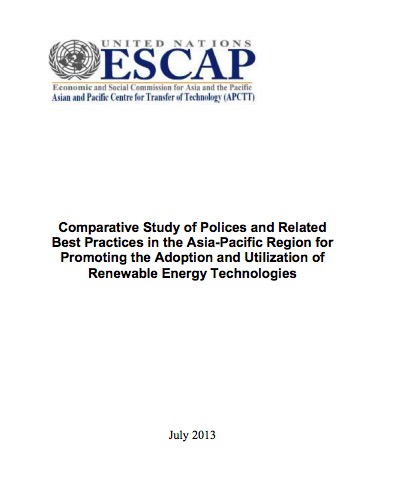Comparative Study of Polices and Related Best Practices in the Asia-Pacific Region for Promoting the Adoption and Utilization of Renewable Energy Technologies

The increased demand and surge in energy prices in the Asian energy markets has renewed the concerns of governments, businesses, and individuals regarding the rapidly depleting fossil fuel resources and expensive methods of generating electricity to meet the growing demand.
The world is changing and has to utilize its resources in a more efficient and environmentally friendly manner while providing its customers with affordable power. This transition towards a more efficient low-carbon economy may change both the way power is produced, transmitted, distributed and consumed. With the new policies already introduced in the United States and Europe to incorporate the abundant renewable resources, Asia may be keen to consider and tailor some of the successful methodologies.
Renewable energy sources have grown to supply approximately 17 % of global energy consumption in 2011. By 2011 total renewable power capacity worldwide was approximately 1400 GW an increase of 8 % over 2010. In 2013 and onward renewable energy is expected to grow strongly in the end use sectors: power, heating, cooling and transport. The top seven countries China, United States, Germany, Spain, Italy, India and Japan accounted for 70 % of total capacity world wide.
The top five countries for investment are China, United States, Germany, Italy and India. Of all these countries China is the fastest growing regarding renewable energy with the most growth in renewable capacity (282 GW). By region, the EU was home to nearly 44% of global non-hydro renewable capacity at the end of 2011, and the BRICS nations accounted for almost 26%; their share has been increasing in recent years, but virtually all of this capacity is in China, India, and Brazil.
